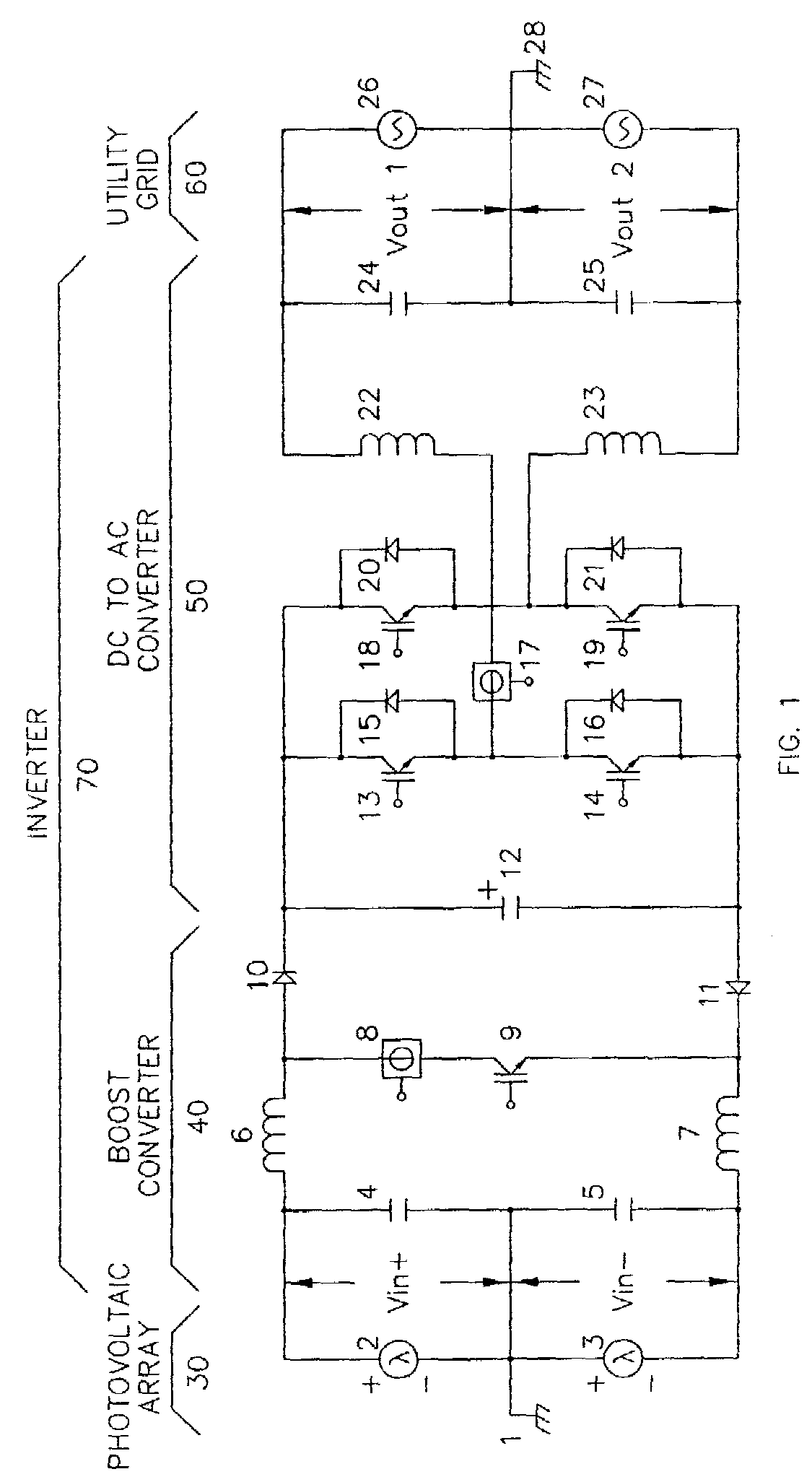DC to AC inverter with single-switch bipolar boost circuit
a dc to ac inverter and boost circuit technology, applied in the direction of electric variable regulation, process and machine control, instruments, etc., can solve the problems of reducing power conversion efficiency, increasing the overall cost of the inverter or system, and not meeting the minimum voltage requirements for direct dc to ac conversion
- Summary
- Abstract
- Description
- Claims
- Application Information
AI Technical Summary
Problems solved by technology
Method used
Image
Examples
Embodiment Construction
[0003]The invention is more related to the power circuit topology of an inverter than the control methods. The inverter topology is novel while the control methods are known.
[0004]The preferred embodiment of the invention is shown in FIG. 1 and is illustrated as part of a system consisting of three components; an inverter 70, a photovoltaic array 30 and a typical 120 / 240 Vac, split-phase, residential, electric utility service 60. The inverter 70 is the embodiment of the invention and is further broken down into to two functional blocks, the boost converter 40 and the DC to AC converter 50. The photovoltaic array 30 and the electric utility service 60 serve to illustrate the use and usefulness of the invention. The system described converts solar energy to electric power and functions as a distributed generator on the electric utility grid.
[0005]For maximum power conversion efficiency, it is desirable to regulate a constant voltage on capacitor 12 slightly higher than the peak voltag...
PUM
 Login to View More
Login to View More Abstract
Description
Claims
Application Information
 Login to View More
Login to View More - R&D
- Intellectual Property
- Life Sciences
- Materials
- Tech Scout
- Unparalleled Data Quality
- Higher Quality Content
- 60% Fewer Hallucinations
Browse by: Latest US Patents, China's latest patents, Technical Efficacy Thesaurus, Application Domain, Technology Topic, Popular Technical Reports.
© 2025 PatSnap. All rights reserved.Legal|Privacy policy|Modern Slavery Act Transparency Statement|Sitemap|About US| Contact US: help@patsnap.com


